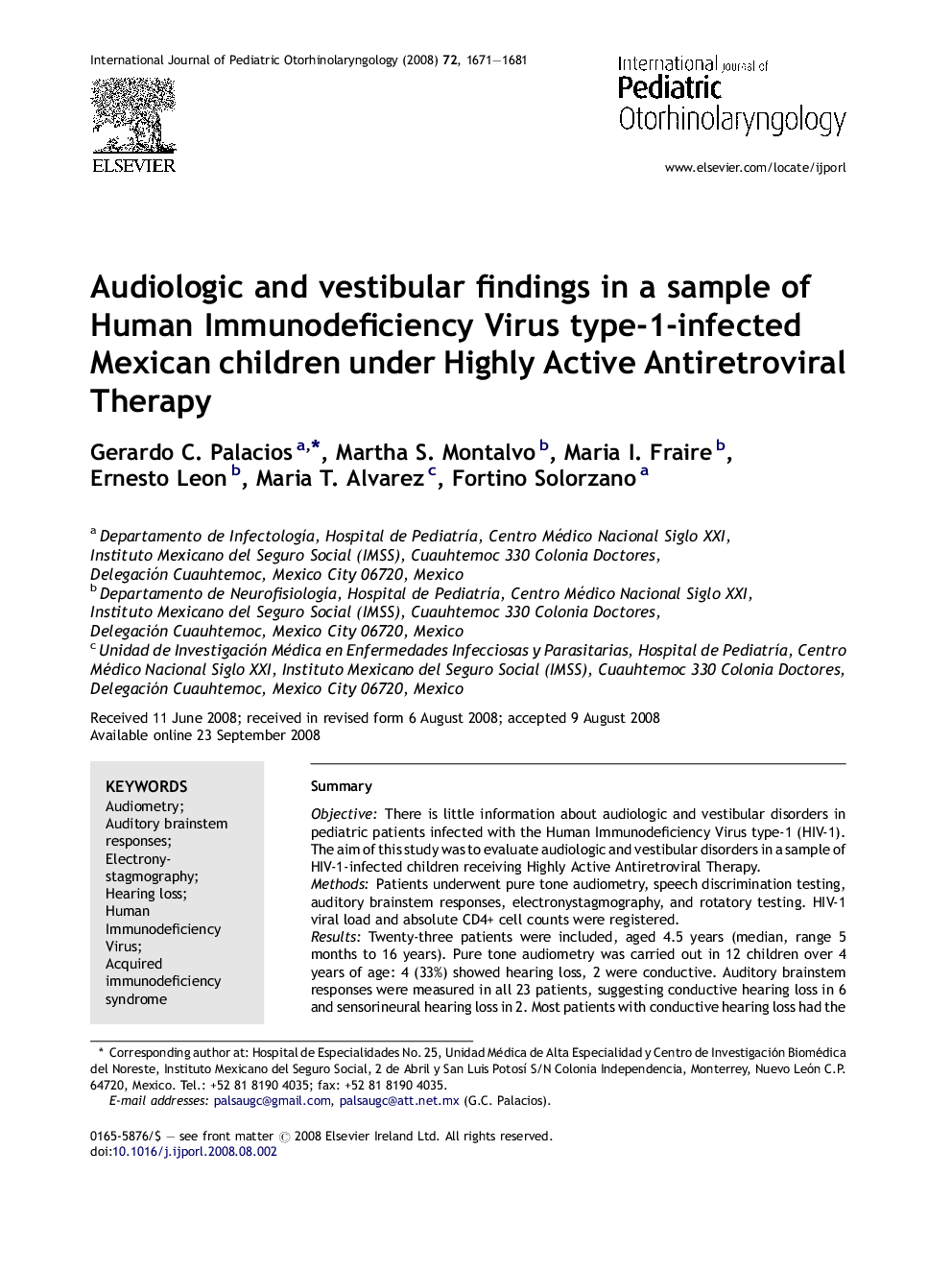| Article ID | Journal | Published Year | Pages | File Type |
|---|---|---|---|---|
| 4114843 | International Journal of Pediatric Otorhinolaryngology | 2008 | 11 Pages |
SummaryObjectiveThere is little information about audiologic and vestibular disorders in pediatric patients infected with the Human Immunodeficiency Virus type-1 (HIV-1). The aim of this study was to evaluate audiologic and vestibular disorders in a sample of HIV-1-infected children receiving Highly Active Antiretroviral Therapy.MethodsPatients underwent pure tone audiometry, speech discrimination testing, auditory brainstem responses, electronystagmography, and rotatory testing. HIV-1 viral load and absolute CD4+ cell counts were registered.ResultsTwenty-three patients were included, aged 4.5 years (median, range 5 months to 16 years). Pure tone audiometry was carried out in 12 children over 4 years of age: 4 (33%) showed hearing loss, 2 were conductive. Auditory brainstem responses were measured in all 23 patients, suggesting conductive hearing loss in 6 and sensorineural hearing loss in 2. Most patients with conductive hearing loss had the antecedent of acute or chronic suppurative otitis media but with dry ears at the time of evaluation (p = 0.003). Abnormal prolongations of interwave intervals in auditory brainstem responses were observed in 3 children (13%, 4 ears), an abnormal morphology in different components of auditory brainstem responses in 4 (17.4%, 7 ears), and abnormal amplitude patterns in 11 patients (48%, 17 ears). Vestibular tests were abnormal in all six patients tested, with asymmetries in caloric and rotatory tests. Although differences were not significant, in general, audiologic abnormalities were more frequent in patients with more prolonged HIV-1 infections, higher viral loads, or lower absolute CD4+ cell counts.ConclusionsConductive hearing loss associated with previous otitis media events, abnormalities in auditory brainstem responses suggesting disorders at different levels of the auditory pathways, and unilateral vestibular hyporeflexia were frequent findings in our sample of HIV-1-infected children under Highly Active Antiretroviral Therapy. These findings suggest that HIV-1-infected children should be submitted to audiologic and vestibular evaluation as early as possible in order to reduce their impact on the psychosocial development of these patients.
